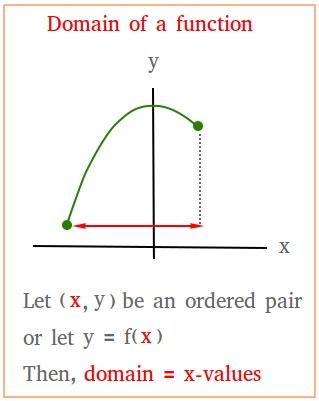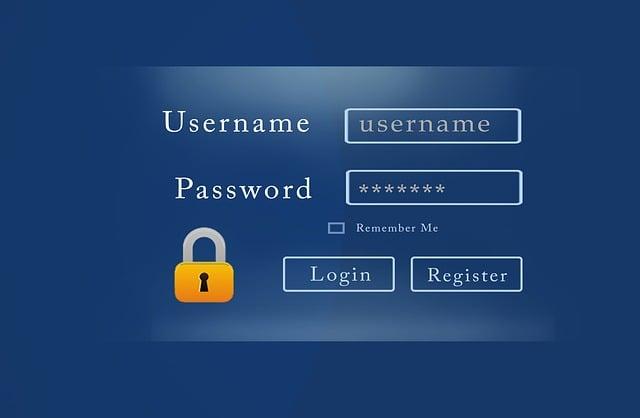Table of Contents
- Understanding the Long-Term Benefits of Buying a Domain for Twenty Years
- Key Considerations When Choosing a 20-Year Domain Registration
- Navigating the Costs: Is It Worth Investing in a Two-Decade Domain?
- How to Ensure Your Domain Stays Secure Over Two Decades
- Tips for Transferring and Managing Your 20-Year Domain with Ease
- Q&A
- To Conclude


Understanding the Long-Term Benefits of Buying a Domain for Twenty Years
Investing in a domain for an extended period, such as twenty years, brings a host of long-term benefits that can significantly impact your online presence. First and foremost, purchasing a domain for two decades solidifies your brand’s identity and longevity on the internet. With a stable online address, you can build trust with customers, as they are more likely to perceive a longstanding domain as reliable and reputable. Additionally, it eliminates the anxiety of renewal fees or potential loss of your domain due to lapses in payment, ensuring your brand remains consistently accessible.
Another critical advantage of committing to a long-term domain purchase is the SEO benefit it provides. Search engines often favor established domains, which can result in improved search rankings over time. This is particularly crucial for businesses focusing on organic traffic. By owning your domain for twenty years, you can accumulate age-related authority, which signals to search engines that your site is a credible source of information. Furthermore, it allows you to implement comprehensive SEO strategies without worrying about transitioning to a new domain, which can negatively impact your ranking and traffic.
In addition to brand stability and SEO benefits, a long-term domain acquisition is a proactive step against potential market changes. By securing your domain, you protect your digital assets from competitors who might be eying similar names or extensions. This strategy can reduce the risk of brand dilution and ensure your unique identity in a crowded market. Moreover, owning a domain for two decades opens opportunities for greater investment, as a valued domain can appreciate significantly over time, becoming a potential asset for future sale or partnership, thus providing long-term financial benefits.


Key Considerations When Choosing a 20-Year Domain Registration
Choosing a 20-year domain registration involves careful consideration of several factors. First and foremost, it’s essential to evaluate the reputation of the registrar. A well-established, credible provider can offer better security measures, customer service, and reliability. Look for registrars with a solid track record and positive user reviews, ensuring they have good support options in case you face any issues over the long haul.
Next, assess the cost-effectiveness of the registration. While signing up for two decades may seem like a substantial upfront investment, take time to compare prices across various registrars. Some might offer promotional rates for extended registrations, while others might include essential features like privacy protection or email hosting. This can save you from unexpected costs down the road. Here’s a simple comparison that summarizes potential costs and features:
| Registrar | 20-Year Cost | Included Features |
|---|---|---|
| Registrar A | $300 | Privacy Protection, Hosting |
| Registrar B | $250 | Email Forwarding |
| Registrar C | $280 | SSL Certificate, Support |
consider the potential for empire-building with your domain. A 20-year commitment indicates a long-term vision, so ensure your domain name aligns with your future goals. Think about scalability and how the domain might adapt if your project or business evolves. A domain that seems fitting today may not hold its relevance in the coming years, so factor flexibility into your choice to support growth and change.
Navigating the Costs: Is It Worth Investing in a Two-Decade Domain?
Investing in a domain for two decades can seem daunting at first, but it often brings substantial long-term benefits. One of the primary advantages of a long-term registration is the stability it provides. Businesses and website owners who commit to a lengthy registration period can avoid the hassles of annual renewals. This means less time and energy spent managing deadlines, which is particularly beneficial for those focusing on growing their online presence. Additionally, having a domain registered for a longer time can often enhance your SEO ranking, as search engines favor established domains.
Another significant factor to consider is the potential for cost savings over time. A typical domain name can cost anywhere from $10 to $20 annually. However, many registrars offer discounts for extended registrations. Investing in a two-decade domain upfront may seem like a larger expense, but the overall savings might surprise you. Consider the costs in the table below, which highlights potential savings when choosing a long-term plan:
| Registration Duration | Annual Cost | Total Cost |
|---|---|---|
| 1 Year | $15 | $15 |
| 5 Years | $13 | $65 |
| 10 Years | $12 | $120 |
| 20 Years | $10 | $200 |
Moreover, a long-term investment in a domain name can significantly bolster your brand’s credibility. Domain names that span multiple years signal to your visitors that your brand is committed, trustworthy, and here to stay. This can lead to improved user confidence, as well as a better chance of securing backlinks from reputable sources. If you plan on building a brand, the lasting impression of a two-decade domain might just tip the scales in your favor, making it an investment worth considering.


How to Ensure Your Domain Stays Secure Over Two Decades
To maintain the security of your domain over a long period—like a 20-year span—it’s essential to adopt a proactive approach. Begin by selecting a reliable domain registrar known for its robust security measures and excellent customer service. Look for registrars that offer features such as two-factor authentication (2FA), automatic renewals, and domain locking. These features add layers of security, making it more challenging for unauthorized access or hijacking to occur.
Regular monitoring is another critical component. Consistently check your domain settings and associated email accounts for any suspicious activity. Utilizing tools like WHOIS privacy can keep your personal information hidden from public databases, reducing the risk of spam and potential phishing attacks. Additionally, consider subscribing to domain monitoring services that alert you to any changes or breaches concerning your domain or registration status.
Lastly, it’s wise to stay informed about cybersecurity best practices. Engage in periodic updates on the latest threats and protective measures. Educate yourself on DNS security extensions, such as DNSSEC (Domain Name System Security Extensions), which helps protect your domain from certain types of attacks, such as spoofing. Here’s a quick reference table highlighting key practices:
| Security Measure | Description |
|---|---|
| Two-Factor Authentication | Requires a second form of verification to access your account. |
| Domain Locking | Prevents unauthorized domain transfers. |
| WHOIS Privacy | Keeps your registration information confidential. |
| DNS Security Extensions (DNSSEC) | Adds an extra layer of verification to DNS queries. |
| Regular Monitoring | Checks for unusual activity or changes in settings. |


Tips for Transferring and Managing Your 20-Year Domain with Ease
Transferring and managing a domain you’ve owned for two decades can seem daunting, but with the right approach, it can be a seamless process. First, ensure you have all necessary information at your fingertips, such as your domain registrar’s details, the domain’s authorization code, and any previous administrative emails related to the domain. This preparation will streamline any transfer processes and minimize downtime. Regularly check for any domain lock settings that may prevent transfers, and be proactive in making adjustments before initiating the move.
When you decide to transfer, timing is crucial. Choose a period when your website traffic is lower to avoid disruptions. It’s wise to notify your users about potential changes before starting the transfer. Keep a backup of your website files and database to mitigate any risks related to the transition. Here’s a quick checklist to help you manage important steps during the transfer:
- Verify domain ownership
- Get the authorization code
- Disable domain privacy settings
- Update DNS settings as needed
- Monitor the transfer status
After the transfer is complete, it’s essential to maintain good management practices to ensure your domain remains in good standing. Make use of reminders for renewal dates throughout the years and consider setting up auto-renewal to prevent unexpected lapses in ownership. Additionally, keep your WHOIS information up to date so you can be easily contacted regarding your domain. The following table summarizes key management tasks:
| Task | Frequency |
|---|---|
| Renew Domain | Yearly |
| Check Domain Status | Quarterly |
| Update WHOIS Info | As Needed |
| Backup Website | Monthly |
By adhering to these tips, you not only simplify the transfer process but also lay the groundwork for effective long-term management of your 20-year domain. With careful planning and regular upkeep, your domain can continue to serve as a reliable asset for many years to come.
Q&A
Q&A: Buying a Domain for 20 Years
Q1: Why should I consider buying a domain for 20 years instead of the usual annual renewal? A: Purchasing a domain for a longer term can offer several benefits. First, it ensures your online presence is secured for a significant period, reducing the worry of forgetting to renew annually. This can be particularly advantageous for businesses or individuals aiming for long-term branding. Additionally, some registrars may offer discounts for multi-year registrations, potentially saving you money in the long run.Q2: What factors should I consider before buying a domain for 20 years? A: Before committing to a long-term purchase, consider the following factors:
- Future Plans: Assess your long-term vision for your website or business. Will the domain name still be relevant to your brand in 20 years?
- Market Trends: Consider whether the industry or niche is likely to evolve significantly. A trendy name today may not hold the same value in the future.
- Financial Stability: Ensure you are financially ready for this upfront investment, as committing to a long duration means tying up funds that may be needed elsewhere.
Q3: Can I transfer my domain to another registrar if I buy it for 20 years? A: Yes, you can transfer your domain to another registrar at any time, even if you purchased it for 20 years. However, be mindful that there may be transfer restrictions or processes involved. Typically, domains cannot be transferred within the first 60 days of registration, but after that, you should have no issues moving your domain.
Q4: What happens if I want to sell my domain before the 20 years are up? A: Selling a domain is generally straightforward, regardless of how long you’ve owned it. If you decide to sell before the 20-year term is complete, you’ll simply need to follow the sale process through your domain registrar. Make sure to transfer ownership properly to the new buyer, who may need to handle registration fees starting from their purchase date.
Q5: Are there any disadvantages to buying a domain for such a long duration? A: While there are many advantages, there are some potential downsides to consider. If you change your business direction or outgrow the domain name, you might be stuck with it for an extended time. Additionally, prepaid domains require a greater upfront financial commitment, which may not always be practical. the internet landscape can change rapidly; being locked into a domain could limit your flexibility in the long term.
Q6: What should I look for in a domain registrar when purchasing a long-term domain? A: When selecting a registrar for a long-term domain purchase, consider factors such as:
- Reputation and Trustworthiness: Look for registrars with positive reviews and a solid track record.
- Customer Support: Reliable support is crucial should you encounter issues.
- Additional Features: Evaluate what extras the registrar offers, such as domain privacy protection, email hosting, and easy management tools.
Q7: How can I ensure the security of my long-term domain purchase? A: To enhance security for your long-term domain purchase, enable two-factor authentication on your registrar account, utilize domain privacy protection to shield your personal information, and regularly confirm your contact details are up to date in the WHOIS database. Also, keep an eye on your domain’s expiration date and renew well in advance if you ever consider shortening the duration of the registration.
This Q&A aims to clarify the important aspects of buying a domain for 20 years, providing potential buyers with the information they need to make informed decisions. Whether you’re a business owner, a blogger, or just looking to secure your online identity, understanding these facets can aid in evaluating your long-term domain strategy.

